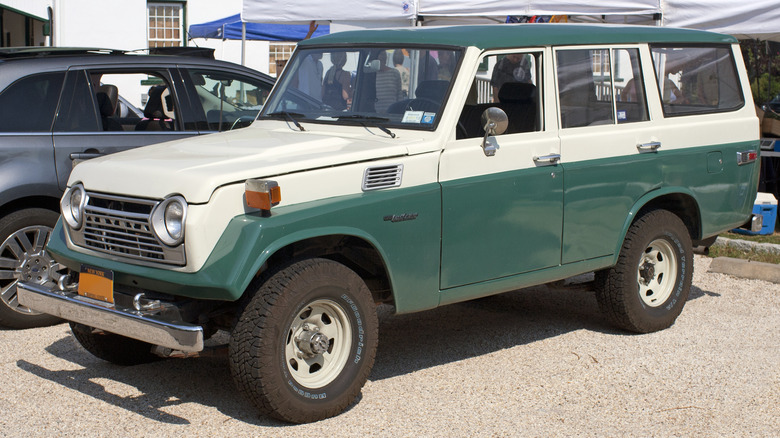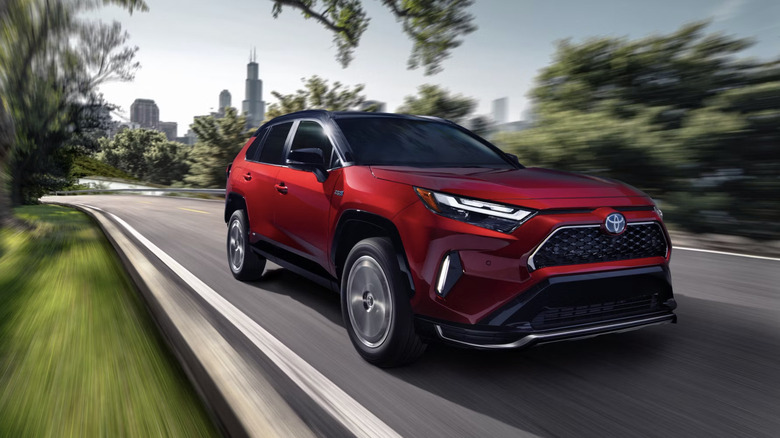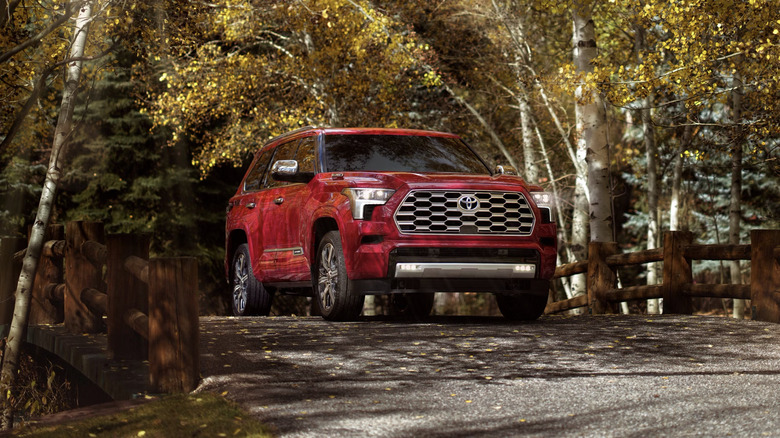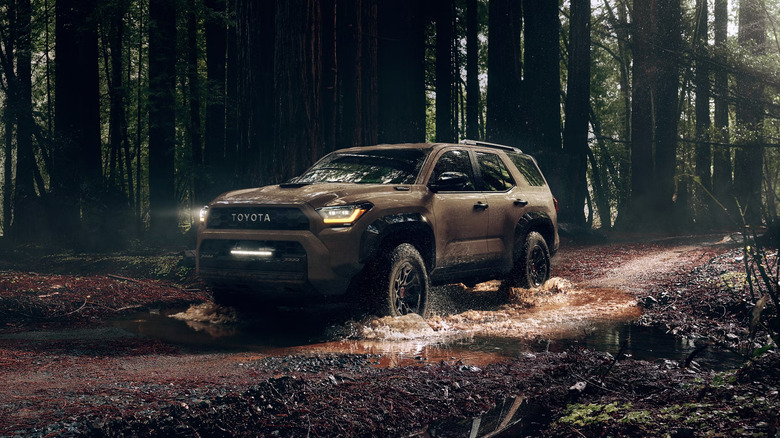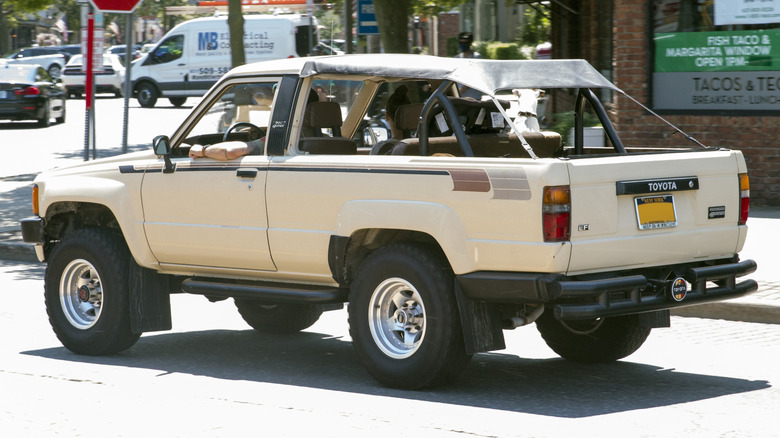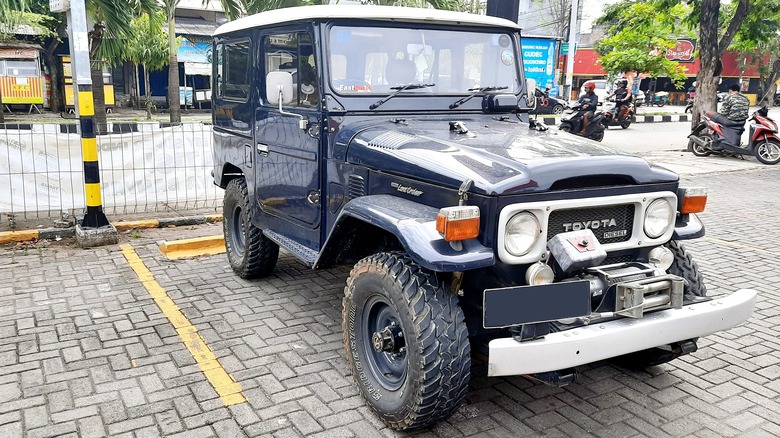6 SUVs Every Toyota Fan Should Know About
Toyota sold almost 11.23 million vehicles worldwide last year, making it the most popular auto brand on earth. Statista listed four Toyotas among the top 10 selling models globally, including the Corolla, which finished second to the Tesla Model Y by just 20,000 units. Toyota has traditionally also been a strong player in the pickup truck and sport-utility sector, with the Hilux remaining popular through eight generations and a few vintages of the 4Runner standing out as solid off-road performers.
The Toyota lineup of SUVs also features the RAV4, which sold almost a million units last year to place it third globally behind the Model Y and Corolla. Toyota sells nine different 2024 SUV models, and also offers nine trim levels of the 2025 4Runner. While the current Toyota SUV lineup is robust and impressive, we're going to reserve some space here for a few classic models that also deserve a spot in every Toyota loyalist's garage.
[Featured image by Mr. Choppers via Wikimedia Commons|Cropped and scaled|CC-By 3.0]
RAV4 Prime
The 2024 RAV4 is available with a gasoline, traditional hybrid, or plug-in hybrid drivetrain. The gas-powered version starts at under $29,000, but most buyers will be curious about the fuel savings offered by the two hybrid versions. The standard hybrid provides about 40 miles per gallon of fuel economy based on driving conditions, but the plug-in hybrid RAV4 Prime delivers up to 94 MPGe, thanks in part to the battery-only range of 42 miles.
The RAV4 Prime's drivetrain puts out more than 300 combined horsepower, which is enough to get you from 0-60 in 5.7 seconds. It also offers 33.5 cubic feet of cargo space and a towing capacity of up to 2,500 pounds. Those specs keep the RAV4 Prime useful as a weekend plaything, considering that's more than enough to tow most teardrop trailers, even fully loaded with water, food, and even a mountain bike or two. The RAV4 Prime is also available with a voice-activated 10.5-inch infotainment screen and Toyota's SafetySense 2.5 suite of driver assist features.
Third generation Sequoia
The biggest and most lavishly appointed SUV in Toyota's current lineup is the Sequoia, although it's also the most expensive. It has an i-Force MAX twin-turbo hybrid power plant that puts out impressive figures of 437 horsepower and 583 pound-feet of torque, which is enough to tow up to 9,520 pounds while still providing respectable fuel economy of 22 mpg. There's room for up to eight people inside, and the load-leveling air suspension helps balance out the extra weight of a trailer or large cargo loads.
You can opt for a panoramic moonroof for stargazing, and the first-and second-row seats have an available heating and cooling feature to keep everyone comfortable. The rear bench can be swapped out for captain's chairs, and the third row folds away and slides forward at the touch of a button to allow more room for gear. A 14-inch touchscreen with dual Bluetooth connectivity is available in the cockpit, a 14-speaker JBL sound system and wireless smartphone charging are available, and SafetySense 2.5 is there to help protect occupants and pedestrians.
2025 4Runner TRD Pro hybrid
Of the nine versions of the 2025 Toyota 4Runner, the TRD Pro hybrid stands out as the most impressive. The i-Force MAX drivetrain produces up to 326 combined horsepower and 465 pound-feet of torque, and gives the TRD Pro 4Runner a towing capacity of up to 3 tons. For better articulation on the trails, you also get Toyota's electronic stabilizer disconnect mechanism, which gives the front end more flex.
True to its Baja off-road racing roots, the 4Runner TRD Pro also comes with a specially tuned Fox suspension and 33-inch Toyo off-road tires. Toyota's latest SafetySense 3.0 suite is standard on all 2025 4Runners, and you can upgrade to a 14-inch infotainment screen. The new 4Runner shares the TNGA-F platform with the Sequoia, Land Cruiser, Tacoma, and Tundra. You'll have to be patient for a few more months, though, as the 2025 4Runner won't be on sale until this coming fall.
First generation 4Runner
The 2025 4Runner will kick off the sixth generation of that SUV model later this year, but there's something to be said for the first-gen 4Runner, even though its design is looking a little dated 40 years after it was first released. The first generation of 4Runner ran from 1984 through 1989, and one feature of that particular version that makes it stand out is the removable rear shell. Even with the fiberglass cover removed, the front seats were still covered with a sheet of metal integrated with the A-and B-pillars.
This left the early 4Rrunner stuck in the netherworld between a fully enclosed SUV and convertible models like the Jeep CJ5 and CJ7 and International Harvester Scout. The first-gen 4Runner initially was offered with the stalwart 22R inline four-cylinder engine, but during that run, a turbocharged four and naturally aspirated V6 were also available. The 1984-1989 4Runner is a bit hard to find these days, but if you can locate one, they go for about $18,000.
[Featured image by Mr.Choppers via Wikimedia Commons|Cropped and scaled|CC-By 3.0]
FJ40 Land Cruiser
One of the most desirable and fun-to-own classic Toyota SUVs is the FJ40 Land Cruiser, which was on the market from 1960 through 1984. From 1974 on it was offered with a four-speed transmission instead of the earlier three-speed gearbox, and 1974 also saw the introduction of an optional diesel engine. The model's F designation was borrowed from the engine series, and the 40 represented the 4-liter displacement of that inline six engine. The J was to signify that it was a "Jeep" general-purpose vehicle, although the use of that label prompted legal threats from Willys Overland and an apology from Toyota. The FJ40 was far less refined than Toyota's modern SUVs, and its engineers focused on durability and off-road chops at the expense of creature comforts.
U.S.-market models didn't get front disc brakes until 1976, and air conditioning and power steering became available three years later. Beginning in 1981, a new 4-liter diesel engine was offered, and Land Cruisers with this option were known as HJ47s.
FJ55 Land Cruiser
In August of 1967, Toyota added the FJ55 Land Cruiser to its lineup. This model was more akin to more modern SUVs, with four doors and a large cargo area with a folding rear seat. One feature that was advanced for the time was the power rear window that rolled down into the tailgate. Aside from that, the FJ55 was decidedly utilitarian, earning the nickname "Iron Pig." Until 1975 it shared the F series I6 with the FJ40, but that year it got the new 2F engine, which displaced 4.2 liters and put out 135 horsepower.
Even with the larger I6, the FJ55 was still a lumbering brute of a vehicle with a weight of 4,000 pounds and the aerodynamics of a shipping crate. Iron Pigs are notoriously dependable, though, with the powertrain often providing solid service well past the point where the bodies have rusted away. The FJ55 lasted through the summer of 1980, when the Land Cruiser badge was moved to the comparably unwieldy FJ60.
